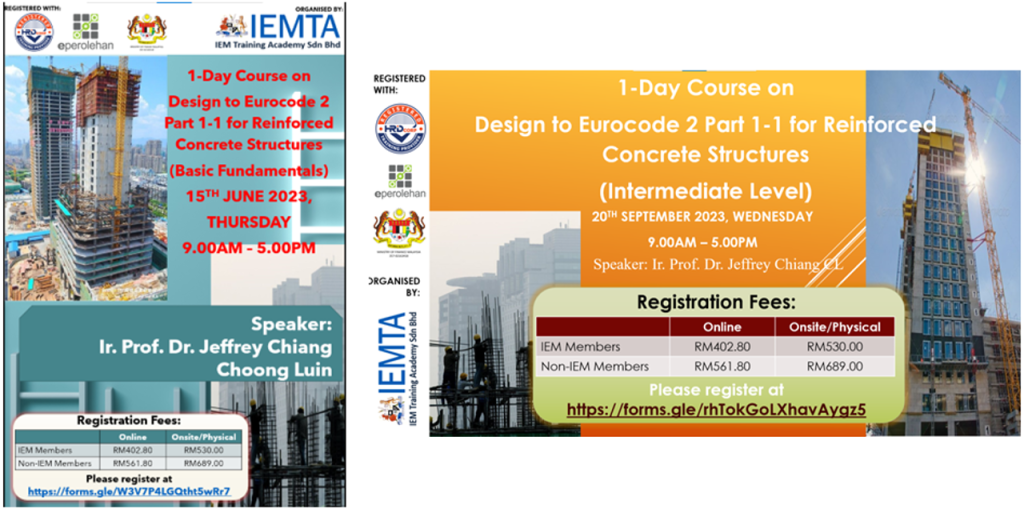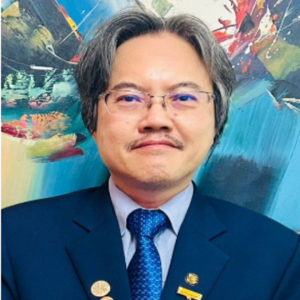在过去 15 年中,马来西亚、新加坡和香港等一些地区国家或经济体的建筑业在土木和结构工程设计及施工实践方面发生了重大变革。究其原因,这些英联邦经济体自英国殖民时期起就一直使用英国标准(BS)进行结构设计,直到 2010 年英国改用 BS 欧洲标准(EN)版本。这与在钢筋混凝土、钢材、木材、复合材料、砖石和铝材结构的设计和施工中采用欧洲规范是一致的。
自 2010 年以来,马来西亚和新加坡在其建筑行业实践中全面采用了欧洲规范,而香港等经济体则参照英国标准 EN 文件制定了自己的设计标准。这意味着建筑业从业人员,尤其是设计师、规划师和承包商,希望确保其项目的最佳实践符合先进标准。当然,其根本原因也是为了维护他们的专业利益,根据建筑附例和议会法案的最新规定,维护和保证他们的成品和设计在法律上得到认可。

因此,建筑行业的专业人员,特别是工程师、技术人员和技师,有必要维护和保障公众的福利和安全。要做到这一点,就必须教育和培训年轻一代,让他们在专业工作中采用现有的标准和技术。为此,我非常高兴地向大家报告,马来西亚工程师学会(IEM)一直是这一努力的发起者和先锋。 2006 年后马来西亚建筑业的混凝土设计标准 2004 年。它得出结论,马来西亚在混凝土设计方面必须从英国标准转向欧洲标准,以便与英国的决定保持一致。
2006 年,马来西亚标准局(DSM)任命 IEM 担任技术委员会主席,起草马来西亚钢筋混凝土设计 MS EN1992。随后,从 2011 年至今,IEM 还受邀担任其他委员会的主席,负责制定和审查各种标准。我还负责培训年轻工程师使用 MS EN1992,IEM 在 2023 年组织了两次培训。下面的图 1 和图 2 说明了 IEM 在教育和提高马来西亚采用和实践使用欧洲结构规范的意识方面所发挥的作用。资料来源马来西亚工程师学会, www.myiem.org.my].
作者还打算在 2024 年举办更多 MS EN Eurocode 2 和 Eurocode 3 培训课程,并期待与土木和结构工程行业的年轻从业人员进行有意义的分享。马来西亚工程师学会(IEM)是一个学术团体。IEM 希望与公立和私立大学合作,共同组织许多此类培训课程。


图 1 马来西亚采用和实践 MS EN Eurocodes 的前进方向(资料来源:Jurutera,2014 年)

图 2 作者代表 IEM 举办的关于 MS EN Eurocode 2 的培训课程 (资料来源:Jurutera,2014 年)
作为前进的方向,我希望执业的专业工程师愿意与下一代工程师分享他们在使用最新标准和实践、道德和行为准则方面的经验。这对建筑行业的工程领域尤为重要。

作者简介
蒋庄麟教授
马来西亚工程师学会(IEM)副会长,教授(土木工程)、
世纪大学工程建筑环境与资讯科技系
Jeffrey Chiang Choong Luin教授博士是土木工程领域中的杰出人物,目前担任马来西亚工程师学会(IEM)的副会长,同时也是世纪大学工程建筑环境与资讯科技系的教授。Jeffrey Chiang博士拥有多元化而辉煌的职业生涯,在学术界与专业工程领域上都贡献良多。他曾在ARUP Jururunding Sdn Bhd KL担任结构工程师、SIT巴生校园高级讲师、Monash大学双威校园土木工程讲师以及UTAR吉隆坡校园副教授。他也曾担任INTI国际大学尼来校区土木工程系教授兼系主任,以及世纪大学工程与建筑环境学院前任院长。Jeffrey Chiang博士曾担任多项重要职务,包括马来西亚标准委员会(Standards Malaysia)混凝土结构设计技术委员会(Technical Committee concrete structures design EC2)主席,以及国际工程与建筑学会(IEM)地震设计技术委员会(EC8)与风荷载设计技术委员会(Wind Load Design)前任主席。他的贡献还包括担任 IEM 土木与结构工程技术部前主席、IEM 前荣誉秘书、IEM 前荣誉财务主管以及 IEM 前副主席(主持公司事务/活动)。

